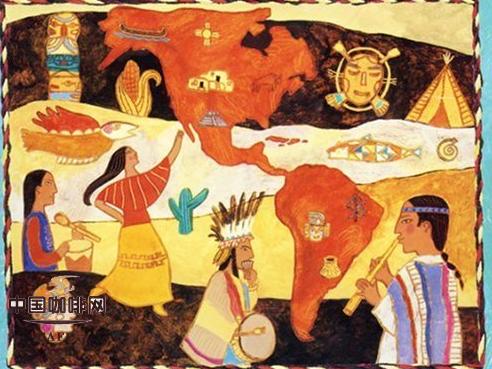The coffee culture in Shanghai is multicultural and creative.

In the history of more than 160 years since Shanghai opened its port, there have been some famous old cafes. Among them, the ruins of the public coffee cafe, located on Duolun Road, Hongkou District, is a historical landmark where Mr. Lu Xun attended the youth gathering of the left-wing Writers' Union in the late 1920s. Since then, cafes in Shanghai have been associated with progressive literature. After more than 80 years, coffee culture has sprung up again in Shanghai.
Coffee culture is on the rise.
Liu Renhe, founder of Laomai Cafe, a well-known cafe in Shanghai, said, "in Shanghai, cafes are popular in the last two or three years, and if you go back to five years ago, they may not be so popular." The popularity of coffee culture is related to the increase of income and the change of consumption habits of Chinese urban residents.
According to a newly released set of data released by the Shanghai Food Association, so far, there are no less than 4000 professional cafes in Shanghai, more than 12000 stores concurrently engaged in coffee, and nearly 100000 employees.
About 12 years ago, the Starbucks coffee chain appeared in Shanghai. Now there are 148 stores in Shanghai alone and nearly 100 in other cities in the Yangtze River Delta. At the same time, coffee and soft drink chains such as COSTA, Champagne and Happy Lemon have also appeared in Shanghai's transportation hubs, shopping malls, parks and other places, which are well known by consumers.
Xiao Huang, a clerk at a coffee chain on Hengshan Road in Shanghai, told reporters that when the passenger flow is large, the store can sell more than 300 cups of drinks every day, mainly coffee and Chinese tea.
"now many people around us are beginning to understand the difference between cappuccino, latte and mocha. Some coffee lovers buy books about coffee culture and exchange their experiences through the Internet." "among the various chain coffee brands, I only drink products from one brand, or simply choose a more expensive personalized cafe, which I think is a symbol of the taste of life," said a female editor of a publishing house named Baomu. "
Pursue multicultural enjoyment
In addition to standardized coffee chain brands, what is more worth mentioning is the personalized small cafes dotted all over the street.
Take Laomai Cafe, which is located in the historical reserve of Shanghai as an example, owner Liu Renhe has fully integrated his collection hobby of nearly 30 years into the cafe. Less than 100 square meters of three-story space, at the same time has the function of "collection warehouse", which contains a variety of Chinese and Western mixed old photos and old objects. For nostalgic "Taobao", drinking coffee at the same time, you can get more rich and diverse cultural enjoyment.
Giving up a high-paying job in banking, Liu Renhe feels that running a cafe is a natural "release" of his hobby. At the beginning of the store, he used his blog to "broadcast" the whole process of designing the store and solicited the suggestions of many netizens. After the official opening, the business exceeded his expectations. Today, the cafe also has its own Weibo, and warm-hearted people often leave messages.
"the popularity of personalized cafes has a lot to do with the growing needs of modern people for communication. In the context of accelerated industrialization and urbanization, relatively indifferent social relations need a platform for communication and dialogue between people. Going to a coffee shop is one of the ways. " Said Zhang Yiguo, an associate professor at the School of Humanities of Shanghai University of Finance and Economics.
He analyzed that in the fast-paced Chinese urban life, coffee culture reflects the Chinese people's strong desire for "slow life". From a certain point of view, the cafe, a place of public consumption compatible with China and the West, is a pressure relief valve for people to alleviate "public anxiety".
"We also found that many cafes also sell authentic Chinese tea, which also reflects the openness and inclusiveness of Chinese life," Zhang said. "
Incubate new cultural ideas
Oil paintings, graffiti, book clubs, movies and music. Careful people find that some popular coffee shops actually have their own "personality" and "specialty". Some of the cafes located in the cultural and creative industries park have become new landmarks for fashion parties, "catwalk" and so on.
In 2012, Liu Renhe, who is fond of collecting, has planned to open a second coffee shop with collection and display function in the near future. He believes that the potential of personalized cafes in China can not be underestimated, on the one hand, consumer demand is gradually increasing, on the other hand, it can also activate the cultural and creative inspiration of shopkeepers.
"We do not provide 'unified service, batch drinks'. While drinking coffee, you can enjoy old posters and old furniture, and if you are interested, you can go to my other grocery store to buy old pocket watches, old leather goods, old books and periodicals. This kind of small shop on the corner may be able to hatch new cultural and creative shoots in the future. "
Important Notice :
前街咖啡 FrontStreet Coffee has moved to new addredd:
FrontStreet Coffee Address: 315,Donghua East Road,GuangZhou
Tel:020 38364473
- Prev

Cafes are springing up all over China, the current situation of Chinese coffee
The cafe culture that emerged in Shanghai a hundred years ago during the concession era has shown increasing signs of rebirth in recent years. According to the Shanghai Food Association, there are now more than 12,000 stores concurrently engaged in coffee in Shanghai, with nearly 100000 employees. Chen Yingzhu reported that Chinese drinking tea is not only a physical need or traditional culture, but also a way to socialize, but coffee and cafes are
- Next

The operation mode of Starbucks and Costa's "war" coffee chain
Kashijia competitor Starbucks has data showing that according to the international average, the potential consumption expenditure of the coffee market in mainland China is about 1 trillion yuan a year, but the annual coffee sales are only 70 billion yuan. Faced with such a large undivided cake, coffee brands have expanded rapidly, with Starbucks and Costa Coffee fighting among the fiercest. This year, Ka Shijia
Related
- What documents do you need to go through to open a coffee shop? coffee shop coffee shop certificate processing process
- How to purchase Coffee beans in small Cafe how to choose a suitable supplier for domestic Coffee supply Company
- How to drink Starbucks Fragrance White Coffee? how to make Australian White Coffee? what Italian coffee beans are recommended?
- The Story of Flora Coffee: the name of Flora Coffee Bean and the implication of the Flowers on Florna Coffee
- How much does a cup of coffee cost? How much is the profit of a cup of coffee? What is the profit of the coffee shop in a year?
- Yunnan small Coffee, known as "fragrant Coffee", introduces the characteristics of Alpine Arabica Coffee producing areas in Yunnan, China
- 2023 latest Starbucks full menu price list how much is a cup of Starbucks coffee what is better to drink the most popular hot and cold drinks recommended
- Starbucks different kinds of Coffee Price list Starbucks menu 2023 Top Ten Best drinks in Starbucks
- Starbucks Spring praise Comprehensive matching Coffee Bean theme Story Packaging implication and taste description
- The cost of a cup of coffee latte American coffee cost price and selling price

